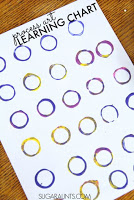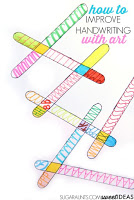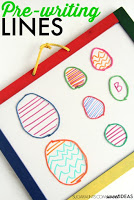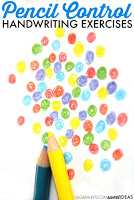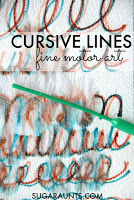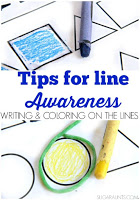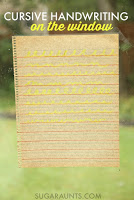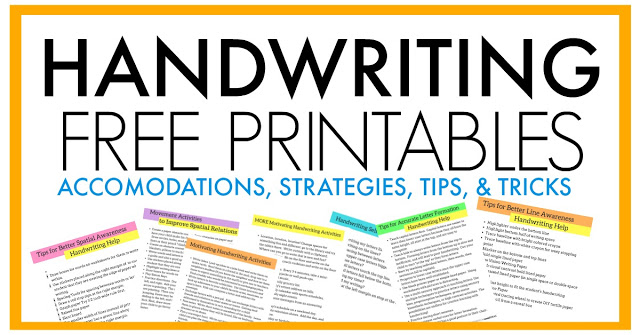Here, you will discover line alignment resources and line awareness activities to promote accurate use of writing lines. Line awareness is a handwriting skill occupational therapists often address to promote functional written work and legibility in handwriting, by offering raised line paper and other handwriting strategies. Let’s talk line use!
Line Awareness Activities
Line awareness refers to placement of the letters accuratley on the writing lines. When we form letters, there are differnet letter sizes that are placed in different positions within the lines of the paper:
- Letters that touch the top and bottom lines (b, d, f, h, k, l, t, and all upper case letters)
- Letters that touch the bottom line (all upper case and all lower case letters)
- Letters that cross the bottom line (g, j, p, q, y)
- Letters that touch the middle line (or middle space if using single rule paper: a, c, e, g, i, m, n, o, p, q, r, s, t, u, v, w, x, y, z)
Line use allows for proper letter sizing and formation. Together these three aspects play an important role in legibility of written work.
Other aspects of line use refers to margin awareness or stopping writing before reaching the edge of the paper or writing area, and use of the left margin, or writing lists.
Typically, difficulties with line awareness are a result of visual processing problems. Visual processing skills that impact line use include: visual scanning, visual closure, visual discrimination, form constancy, eye-hand coordination, and visual motor integration.
Poor use of Writing Lines
Line awareness is a common struggle for many kids. You might know a child who writes with letters floating up over the lines, shows little regard to lines, or is inconsistent with line use. They might make letters of various sizes and write letters super big so that written work looks completely illegible and sloppy. Writing on the lines and using appropriate size awareness is an issue when visual motor integration skills are difficult for a child.
Perceiving visual information such as lines and available writing areas and then coordinating the motor movement needed to place letters accurately can lead to a lot of areas for legibility breakdown.
A child turns in an assignment and the letters are written all over the paper. They started out writing pretty neatly. But then, as they thought out their creative writing prompt, you see the words and letters dropping below the lines. Some of the letters are too big and even are scooting up into the letters on the line above. All of these are examples of poor line awareness.
Many times, kids are working on neatness in handwriting due to letters being written all over the page with little regard to placement on the lines. You might see kids writing with sloped arrangement as the words drift down over the lines or you might see younger kids who are making lower case letters the same size as the tall or upper case letters.
They might write as if they don’t even see the lines on the paper.
For older kids, they might not be able to go back over notes and understand what they’ve written in class.
Line awareness is often times an area that kids need to work on when there are difficulties with legibility in handwriting.
How can a child write neatly on lines of lined paper or worksheets when the letters drop below the lines? As teachers and parents, it can become difficult to read their writing.
How to Improve line awareness
There are many modifications that can be made to help with legibility due to trouble maintaining line awareness. Kids can build the visual perceptual skills needed for line awareness with activities designed to help the child attend to the lines.
Line use is closely related to spatial awareness that was discussed in yesterday’s email. Try using the tips and strategies in combination. Here are a few easy hands-on strategies to help with line awareness and visual motor integration:
Here are a few easy hands-on strategies to help with line awareness and visual motor integration:
Use Beads to Help with Line Awareness
Line Awareness Quick Tip:
Work on letter formation before requiring students to address line awareness. Children are not developmentally ready to write on lines until between ages 5 and 6.
Fine Motor Quick Tip:
Help kids to improve pencil grasp and pencil control when writing on lines by separating the two sides of the hand. When writing, we NEED a stable base to support the fingers that hold and move the pencil.
Encourage creative play activities that separate the two sides of the hands by tucking a cotton ball into the palm when playing with toys like beads. Here is more info about motoric separation of the two sides of the hand and fun ideas for play.
Activities for Writing Lines
Below, you’ll find fun activities to promote use of writing lines for overall legibility of written work.
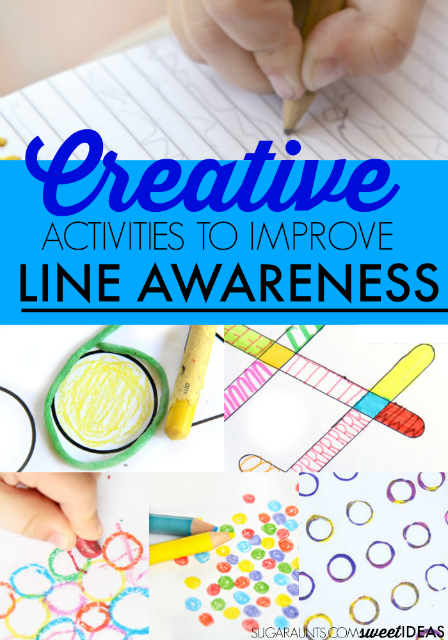
More Ways to adjust Handwriting Lines:
- Highlight the base line.
- Provide bolded lines.
- Try paper with raised lines. This is the type I love for Kindergarten and first grade students. This type is recommended for second grade and older.
- Try using graph paper.
- For children who need more space on the page, this colored raised lined paper may help.
- Use a movable baseline that provides a physical “stop” such as a ruler or index card.
- Use paper designed to address placement on the lines like earth paper.
- Highlight the bottom half of writing space
- Trace baseline with bright colored crayon
- Trace baseline with white crayon for waxy stopping
- point
- Marker on the bottom and top lines
- Bold single lined paper
- Low Vision Writing Paper
- High visual contrast bold lined paper
- Bold raised lined paper (in single space or double space
- forms)
- Adjust line height to fit the student’s handwriting
- Raised Line Paper
- Use a serrated tracing wheel to create DIY tactile paper
- Make a stencil from a cereal box
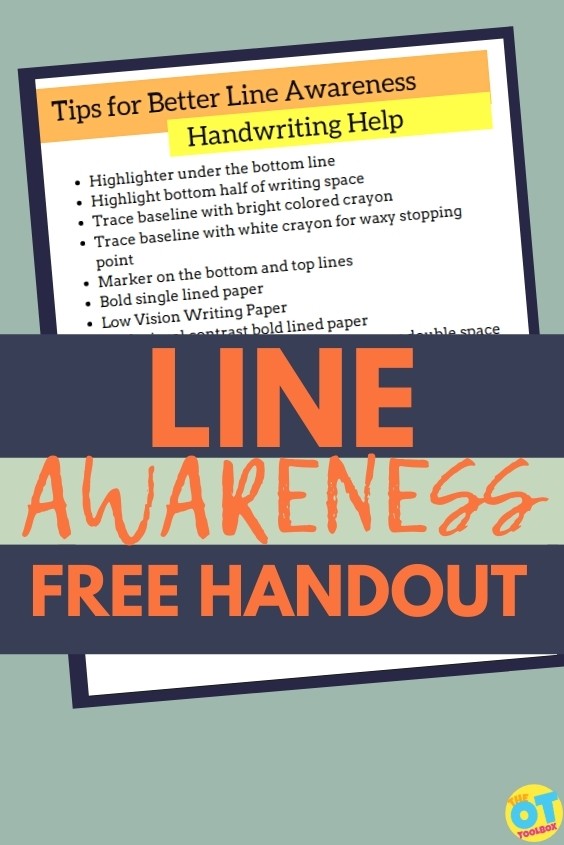
Want these writing lines tips in printable format? You can get this list in a handout to use in therapy. Just join our 5 day series on Handwriting Tips Printables to access this along with 4 other free handwriting handouts.
Join here, on the Handwriting Tips and Tricks printables series!
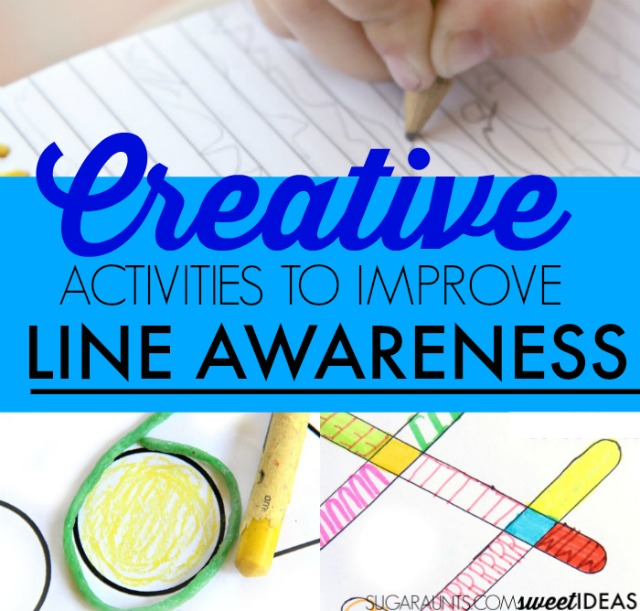

Colleen Beck, OTR/L has been an occupational therapist since 2000, working in school-based, hand therapy, outpatient peds, EI, and SNF. Colleen created The OT Toolbox to inspire therapists, teachers, and parents with easy and fun tools to help children thrive. Read her story about going from an OT making $3/hour (after paying for kids’ childcare) to a full-time OT resource creator for millions of readers. Want to collaborate? Send an email to contact@theottoolbox.com.


